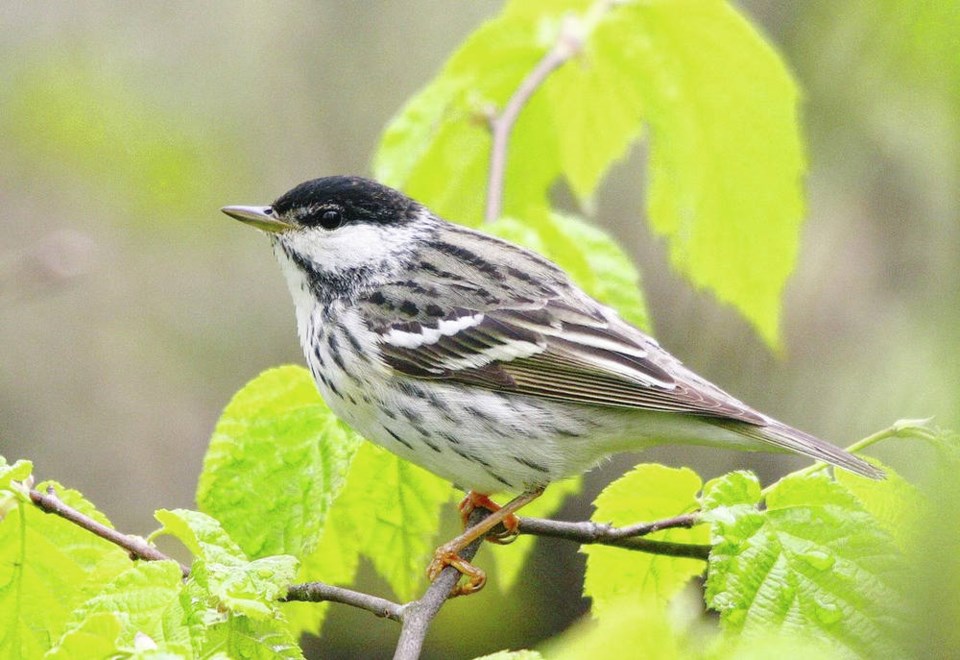Here on the south coast, the great spring migration has passed its peak for 2021. Many birds have reached their summer breeding grounds in the region or have moved on to points north or east.
Over the next few weeks, the final flocks will pass through along the Pacific Flyway, the major north–south flyway for migratory birds in America that extends from Alaska to Patagonia, tying the far far north to the deep, deep south.
Changes in climate patterns and the ways in which we humans change our own surroundings are affecting birds’ migration patterns. Some birds are staying put year round, where before they’d head south for the winter. sa���ʴ�ý geese and Anna’s hummingbirds, for example, now routinely overwinter in Victoria.
In addition, a number of studies over the last few decades have shown that some species are migrating north earlier in the year than they used to. Warming climate in the birds’ northern territories could be shifting the timing of the birds’ migration over time and across populations.
In one 20-year study, British researchers found that a flock of black-tailed godwits now arrives in Iceland about two weeks earlier than it did in the 1990s. Godwits that hatched in Iceland in those early days returned to Iceland in May every year thereafter, but those that hatched more recently, after temperatures had started warming earlier in the year, now arrive in April.
In another study, researchers analyzed spring temperatures across the northern hemisphere alongside information about 195 species that was collected by 21 bird observatories in sa���ʴ�ý and Europe between 1959 and 2015.
The results show that the start of the spring migration season has advanced by one week on average since 1960 across both continents, creating a longer migration season. The data also show that the duration of the spring migration season increased as winter and spring temperatures increased over the year.
But while some bird species and populations may be changing when they migrate, others are shifting their destinations.
Whenever we eat or drink, our bodies digest the nutrients and incorporate into our tissues chemical fingerprints from those nutrients that are unique to the soil and water where the food was grown. By analyzing the fingerprints — called stable isotopes — in our toenails, hair, skin or whatever, it is possible in principle to determine where our food and water comes from by matching the isotopes to their geographic sources.
The technique can be useful for pinpointing the home or breeding ranges of animals.
For example, when researchers analyzed feathers gathered from living blackpoll warblers in the wild and from specimens stored in museum collections, they were able to connect the isotope fingerprints in the feathers to each bird’s breeding grounds in sa���ʴ�ý’s boreal forest.
Despite weighing only 12 grams, the blackpoll warbler undertakes one of the longest migrations among small North American songbirds. Every spring, it flies thousands of kilometres from northern South America to breed here in sa���ʴ�ý, and every fall, it returns south, covering as many as 20,000 kilometres each year.
The feather isotope tests suggest that today, the warblers are breeding about 600 km farther north in the boreal forest than their predecessors did 45 years ago.
Like many boreal songbirds, the blackpoll warbler is experiencing precipitous declines, particularly in eastern sa���ʴ�ý. Since the 1970s, its numbers have dropped 92 per cent.
The researchers speculate that with the northward shift in breeding grounds, the birds may be taking advantage of northwards-warming climate in the boreal to seek out newer, possibly better territories. It’s also possible that habitat loss and degradation in the species’ former boreal breeding areas is pushing the species northwards to the limits of its range — a recent report by the Natural Resources Defense Council outlines some of the challenges facing boreal forest integrity in sa���ʴ�ý. Or the birds’ breeding-range shift could be a combination of both and other factors.
Trouble in the boreal, issues with South American winter habitat, and storms and loss of viable stop-over points en route between the two territories are some of the challenges faced by this tiny but mighty migrator — and many other long-distance migrating birds.
So appreciate them while they pass through, and be kind to them and give them the space they need if these parts are their summer territories.



